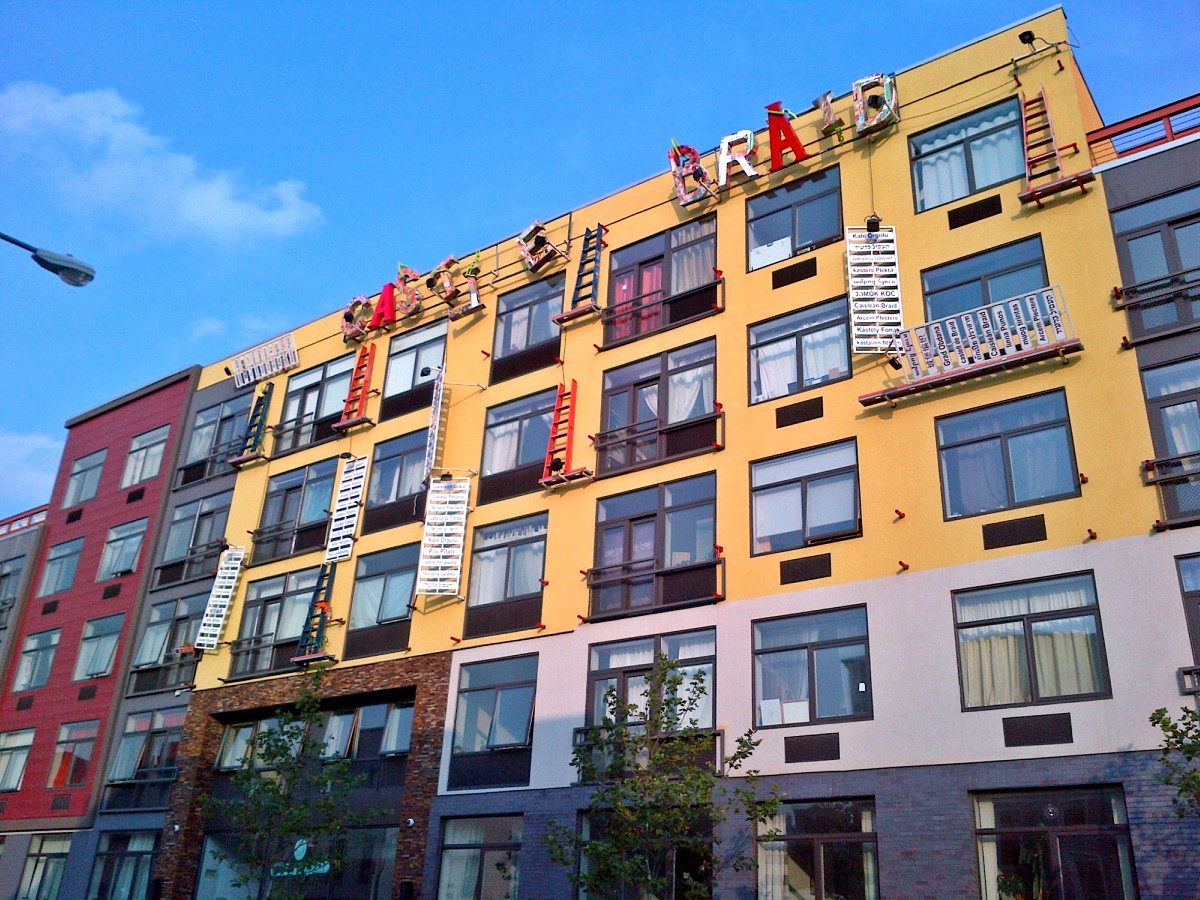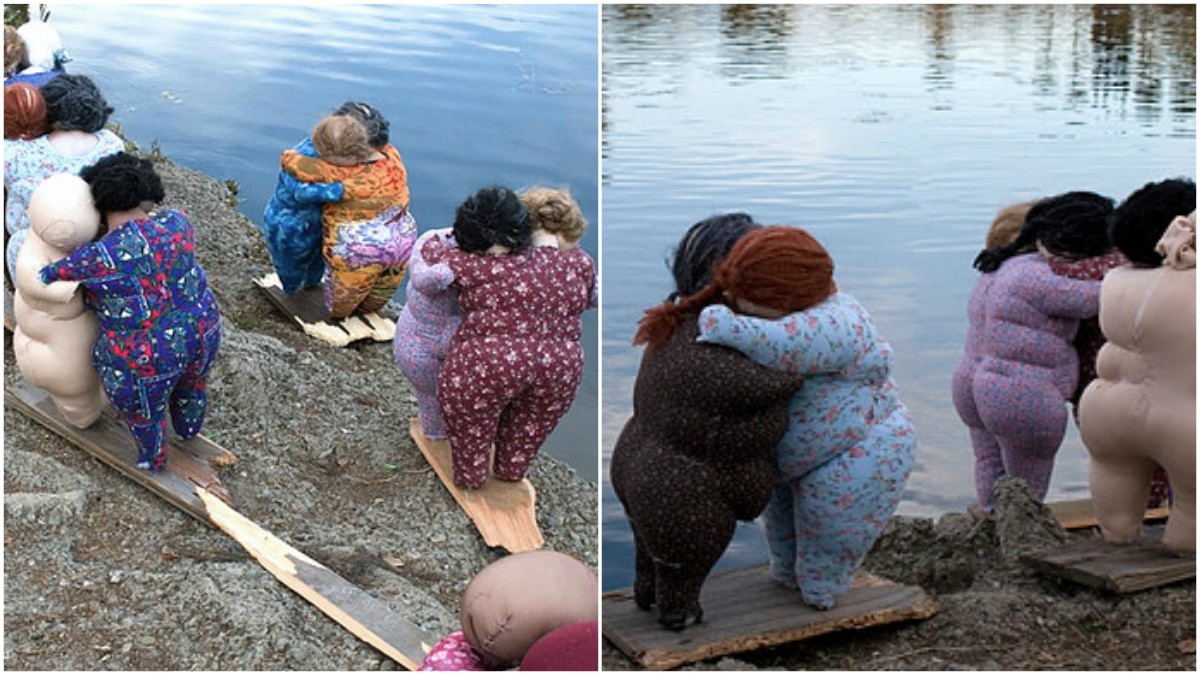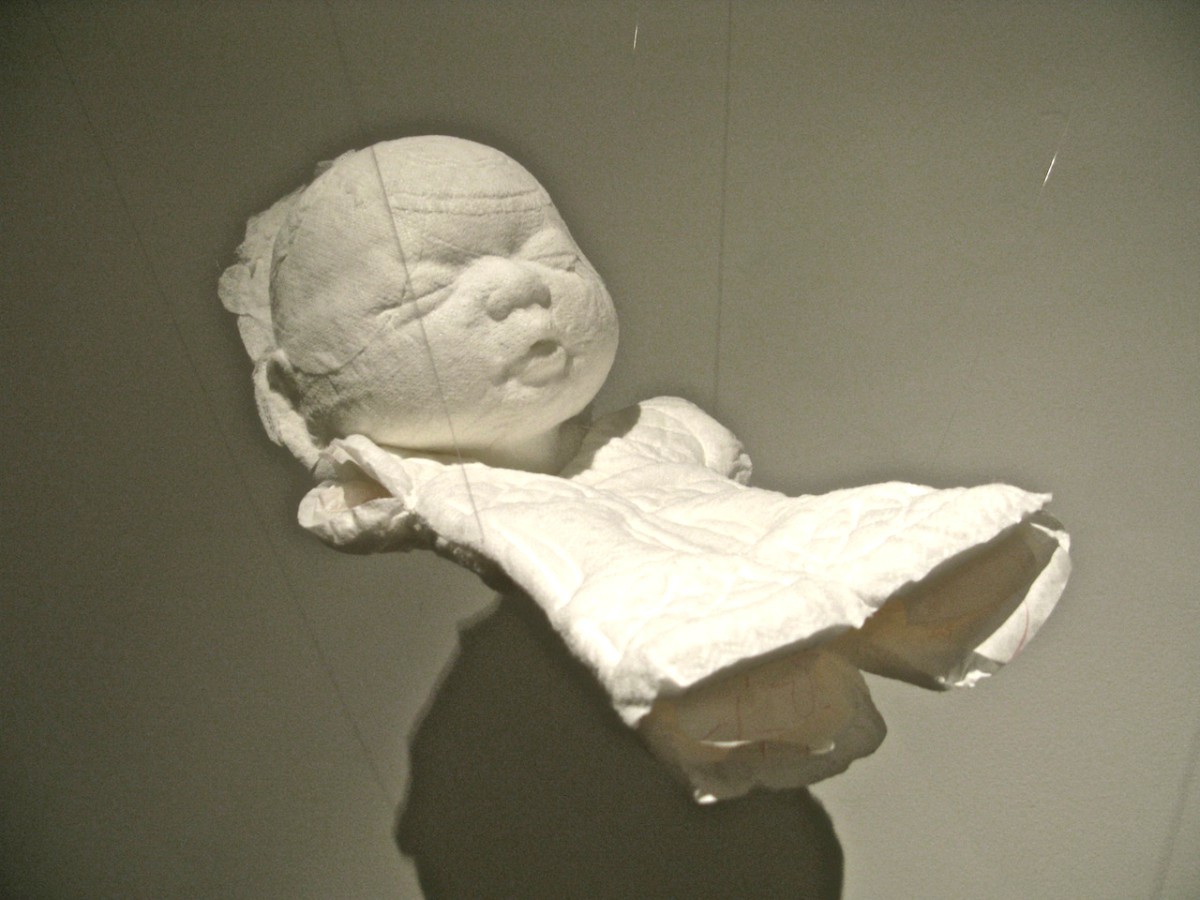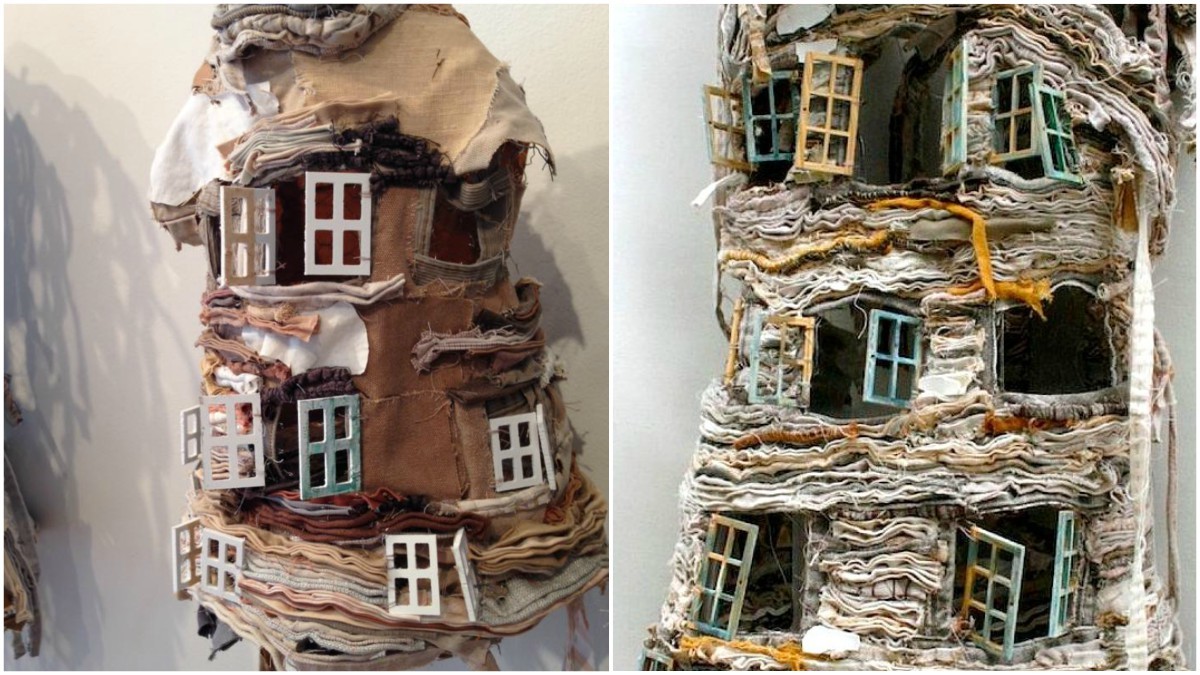Inside the studio: Installation artist Ruby Chishti evokes war in her New York apartment
Ruby Chishti’s studio is located in an up and coming neighborhood of Brooklyn, New York. Bushwick is developing into a Soho-like artist colony that is becoming New York’s current locus of bohemianism.
And Castle Braid, a residence to some two hundred diverse visual and performing artists, musicians, composers, architects, fashion designers and web designers, is a custom-built space that offers seamless interplay between the individual and the vibrant collective.
This college dorm-like five-storey building enables creative talent to be free and collaborative, and to fulfil a role they've always known was theirs to play. Yes, artists are free spirits and you can smell the “good stuff” as you walk through the corridors.
(It would be remiss on my part if I did not mention the commissioned sculptural facade of Castle Braid created by Khalil Chistee, inspired by the loft-buildings of Soho).

As I park my car in the parking lot behind Castle Braid, I find funky cars like BMWs and Audis parked beside murals by local graffiti legends like Jesus Saves and Robots Will Kill.

I am greeted at the door by Ruby, stylishly dressed in a pink top, black dress and stockings. The studio is well appointed and spacious, located on the ground floor overlooking the courtyard full of trees and sculptures.
As I enter the studio, I experience the shock and awe of a war-zone, distress and melancholia. I find loads of trash, shreds of cloth and twigs scattered all over the floor, scraps of cloth and discarded clothing, half-finished human bodies next to shreds of red cloth, a scene from a suicide bombing.

I suddenly hear soft Hindustani (Indian) classical music playing in the background with distinctly recognizable ragas. The linear narrative of the Indian classical music resonates with Ruby’s work.
She says, “I am drawn to its universal beauty that exists beyond human emotions, played by humans. It speaks to me and I discover something new about my work, through repetition and complex forms of symmetry.”
A studio space outside of the home is important as it enables an artist to act with freedom and experiment. “It’s a space to confront and cultivate a deep and wide consciousness. Art making itself is meditation practice that helps focus and quiet the mind.”
Ruby is a night bird and enjoys working in the late hours of the night when there is no distraction. That is the time when the materials and ideas start to speak, silently providing you clues and solutions.
Ruby uses recycled clothing of unknown people that she buys from thrift stores in New York. She cuts them up, sews the pieces individually and then meticulously stitches these rolled and compressed layers of fabric together to form architectural structures and bodies.
She collects patterned fabric from the 1950s, 1960s and 1970s with reduced strength in coloring, creating many washed shades and other color variations. There are works in progress all over her studio and her recently finished sculptures are displayed on the walls, pedestals and on the ground.

My first close encounter with Ruby’s cows and crows was in 2006 at an exhibition titled Soft Restraints at a gallery in Toronto. Cows and crows were present in her studio as well; I was pleased to see that they continue to be a recurring motif in her work. In 2014 at the Waste to Art Museum in Baku, Azerbaijan, Ruby used cows in her installation to signify earth, energy and abundance. Crows are used as silent observers and witnesses, carrying memory and knowledge of the past.
Read Also: Ruby Chishti’s interview by ArtNow
I notice a large completed work titled In the Absence of Sparrows on the wall with references to Shahnameh, the mythical, historical and epic poem by the great Persian poet Firdowsi, depicting heroic battles, war and grief.
A miniature painting from the Shahnameh is recreated on a large canvas by juxtaposing distorted Persian text from with doll-like soft sculptures of hugging women, challenging the absurdity of war. Even after two world wars, humanity has not learned from history. The absurdity continues and the blood keeps flowing. The hugging women are an imagery Ruby brings forward from her earlier work Free Hugs in which she created eleven groups of freestanding figures in the posture of hugging each other, a universal gesture to greet as well as mourn.

We discuss the image of the three year old Syrian boy Alan Kurdi lying on the beach on Sep 2, 2015, which shook the world. How photojournalism once again succeeded in touching people’s hearts and creating a global reaction and outcry. It changed leaders and governments in Canada. Justin Trudeau and Angela Merkel among other Western leaders show genuine compassion by committing to welcoming thousands of refugees, while rich Muslim states do nothing.
War and its after effects, massive displacements of people and destruction of cultures have been central to Ruby’s work as in her moving installations Guardian Angel, There is No Hero, Sketch of a Fading Memory, Blemishes of Time and Armor.

She says: "Art is a catalyst for change, a medium for confronting personal, social and political issues through criticism of the World. Neither the artist needs to explain the meaning of the work nor gain status in the eyes of social elite or special class of scholars, historians and critics. As the photographer captured the image of Alan washed up on the beach, like a toy, the body of a toddler is only a glimpse of the horrors of war and human catastrophe and tragic loss of dignity of the people called refugees who represent a potential threat to the rich Arab countries. The threat is no less for the Western countries who have taken thousands of them." The so-called guardians of Islam are really guardians of their monarchies and personal wealth.
Our discussion quickly moved to current affairs in America, and I asked Ruby how she felt about the extreme right movement coming from Donald Trump as a Republican candidate and her concerns as a Pakistani-American living in New York.
Her response: "White men and women with extreme right views are unhappy with the first black president and the 'Black Lives Matter' movement has made many Americans like Trump, fearful that they are being displaced by minorities and immigrants, and nostalgic for the way America used to be. Trump seizes on deep-seated fears about the country coming under siege of ISIS. Trump’s campaign is based on fear and hope to make America great by getting rid of illegal immigrants and building a wall with Mexico and creating jobs. However, New York City is very diverse and different from the rest of the country. Being multicultural, it is very welcoming. Religious and cultural freedom is unbelievable."
America and other Western countries continue to be very accepting of other religions and cultures in spite of the ISIS-led Islamic ideology. Women in hijab are accepted at work and respected for their dress, not the identity they are trying to establish.
Ruby’s sculptural apparel titled We leave, we never leave, we return endlessly, recently exhibited last year at Twelve Gates Arts in Philadelphia, references this notion of identity in a new home.

Nafisa Rizvi wrote brilliantly about her work, Ruby wears her house, like her heart, on her sleeve. The loss of one home and the consequent resettling and taking up of another in a different land is all imprinted in her sartorial sculptures.
The dresses also remind one of the nests that crows make using debris and detritus, specially finding and utilizing scraps of cloth so ingenuously so as to make solid, unyielding homes that weather violent winds and rain. The nesting instinct is never as strong as in the crow, that ungainly intelligent bird that sometimes emulates humans so closely it would make Darwin rethink the theory of evolution.
The crow is significant because Chishti’s oeuvres has been frequented by the creature and she has spent much time with them, watching them make nests, trying to evoke their creativity in her sculptural home-making.
Ruby Chishti’s journey in becoming an important artist includes serious studio practice complemented by residencies at Harris Museum (Preston, UK, 2001), Vasl (Karachi, 2006), Transparent Studio at Bose Pacia (New York City, 2012), Waste to Art Museum (Baku, Azerbaijan, 2014), Theertha Collective (Colombo, Sri Lanka, 2016), Teton Lab (Wyoming, USA, 2016) and Textile Biennale (UK, 2016-2017), which proves that there are no shortcuts to discovering your path and establishing your art.
This article, originally published in Art Now Pakistan, has been reproduced with permission.
Ali Adil Khan is the founder and director of South Asian Gallery of Art in Toronto. He is also an avid collector of South Asian art and antiquities. He has curated several solo and group exhibitions in Canada.










Comments